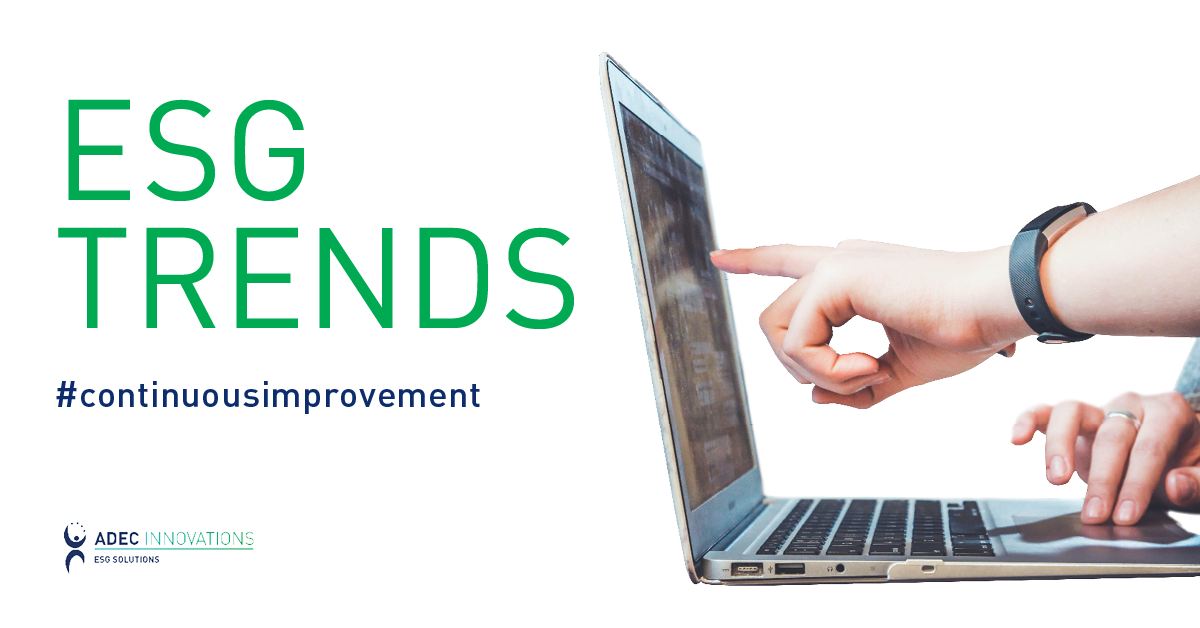Webinar Recap: Bringing Together ESG and Municipal Financing
Our recent webinar, Resilient Cities: Adaptation and Municipal Financing in the Era of COVID-19, brought together Climate Action KC (CAKC), ADEC Innovations, and Moody’s. We presented an increasingly relevant overview of ESG in the context of private investing for local governments, what ESG factors and risks are used by bond raters, and climate resiliency in the era of COVID-19.

By Mary Bean
June 16, 2020
Our recent webinar, Resilient Cities: Adaptation and Municipal Financing in the Era of COVID-19, brought together Climate Action KC (CAKC), ADEC Innovations, and Moody’s. We presented an increasingly relevant overview of ESG in the context of private investing for local governments, what ESG factors and risks are used by bond raters, and climate resiliency in the era of COVID-19.
A recording of the webinar is available here. If you would like to learn more about ESG for local governments—including what key ESG factors and risks are used by bond raters, and what you can do within your community to better manage these risks, we encourage you to check it out.
ESG from the Local Government Perspective
City Mayor Eric Mikkelson of Prairie Village, Kansas, began the webinar by highlighting how ESG has been an accelerating trend even before COVID-19. In his opening remarks, he stated how the pandemic has “underscored and heightened the need and awareness of monitoring and awarding best ESG practices both in businesses and the private sector.”
The webinar dives deeper into why ESG drives the way organizations, whether public or private, build resilience. It is seen as a powerful tool in managing and mitigating climate risks. As the impact of ESG evolves and awareness from local governments grows, so does its influence on municipal financing, where allocation and access to capital is changing as well. We discuss the increasing trend of how cities and states are starting to implement ESG-centric programs and policies to ultimately build long-term prosperity.
COVID-19 and ESG
In making the case that ESG factors will play an increasing role in local governance and decision-making, we go over how this has become even more evident in light of COVID-19.The current situation has placed increased pressure on states and municipalities to balance services and revenues when prioritizing projects and programs. This section provides a thorough overview of the trends in the context of ESG factors such as:
- Environmental: Temporary emissions reductions due to shelter-in-place and other economic disruptions.
- Social: Increase in employees working from home by end of 2021. More localized supply chains for specific products. Investment from local businesses and corporations to support basic needs.
- Governance: Balancing staffing cuts against the maintenance of critical services indefinitely. Reduced tax revenues limiting ability to implement resiliency plans. Prioritizing equitable and resilient recovery. Local natural disasters dictating prioritization of projects.
To find out about the opportunities that we identify for each of these timely trends, along with how you can support resiliency in an era of reduced revenues, watch the full webinar here.
Incorporating ESG Risks into Credit Ratings
A representative from Moody’s Investors Service lead an insightful and valuable discussion during this section of the webinar on how municipal bond raters are also using ESG factors in evaluating city credit ratings. She emphasized the overlap between credit factors and ESG factors, in that they are seeing that companies and cities are being rewarded and performing better (e.g. higher bond ratings) by proactively investing in ESG initiatives. While climate risk analysis is not explicitly stated as a credit risk, this section discussed how the credit challenges of climate change are nonetheless integrated in Moody’s methodologies. This analysis of key credit factors helps bond raters such as Moody’s capture local government resiliency.
Cities that are better prepared to mitigate climate risks and practice extensive ESG planning are more resilient in the long run.
What is the key takeaway? Municipalities can use ESG factors to build resiliency that is both lasting and comprehensive. Climate change and COVID-19 may seem like separate challenges, but both global crises can be tackled through resilient and adaptive planning—and ESG can play a huge role in supporting these efforts. Local municipalities have a lot to gain through an understanding of ESG investment initiatives, and they can also adapt and integrate ESG factors into their decision-making and programs and policies. Cities that are better prepared to mitigate climate risks and practice extensive ESG planning are more resilient in the long run. Understanding the ESG factors that affect or could affect their community also helps in positioning themselves for a higher bond rating.
Ready to learn more? Watch the full webinar here for a detailed picture on ESG for local governments and how you can better manage climate risks in this unprecedented era while helping to increase your bond rating.
Related Articles
Climate Change Impact on Business, ESG, COVID-19, Local Government
By Kendal Moir on December 29, 2021
Webinar | ESG | sustainable business
By John Kester III on December 23, 2021
CDP | Webinar | ESG
By Kendal Moir on October 7, 2021
Webinar | Sustainable Development Goals | ESG | sustainable business
Be a sustainability leader.
Our team supports you no matter where you are on your Sustainability Journey. Talk to us today to learn more.




